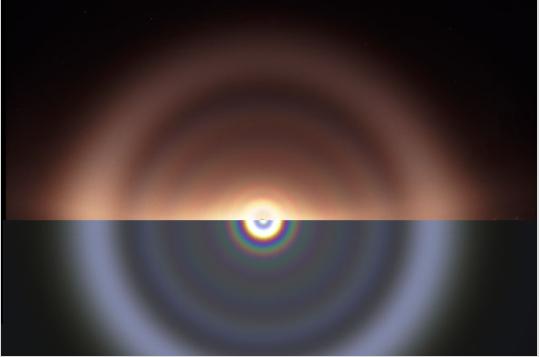Car fogbow simulation
Car Fogbow Simulation: Unraveling the Mysteries of Atmospheric Optics
Have you ever witnessed a car fogbow? The ethereal beauty of this atmospheric phenomenon is truly captivating. But have you ever wondered how these mesmerizing displays are formed? In this article, we delve into the world of car fogbow simulation to shed light on the science behind these elusive spectacles.
Understanding the Formation of Car Fogbows
Fogbows, also known as white rainbows or cloudbows, are similar to their more colorful counterparts but lack the vibrant hues typically associated with rainbows. These elusive spectacles occur when light is diffracted by tiny water droplets suspended in fog, creating a faint arc of white or pale pastel colors.
Car fogbows, as the name suggests, are fogbows that appear in close proximity to vehicles. The headlights of cars serve as the source of light, illuminating the fog and allowing for the formation of these ethereal arcs. The divergence of the headlamp beam introduces some uncertainty in the derived droplet sizes, making car fogbow simulation a fascinating endeavor.
Exploring Fogbow Supernumeraries and Glory Rings
Fogbow supernumeraries and glory rings provide rich material for comparisons with simulations. Supernumerary rings are additional, fainter rings that appear on the inner edge of the main fogbow arc. These rings result from interference between light waves that have undergone multiple diffractions within the droplets.
Glory rings, on the other hand, are concentric colored rings that encircle a bright spot at the center of the fogbow. They are caused by a different optical phenomenon known as the glory effect. The glory effect occurs when light is backscattered by water droplets, creating a circular diffraction pattern.
The Role of Droplet Size in Car Fogbow Simulation
Droplet size plays a crucial role in car fogbow simulation. A lower section of the simulation is dedicated to an IRIS calculation for droplets of mean diameter 9.6 microns and a narrow size distribution with a standard deviation of 6%. This specific droplet size distribution is chosen to produce a fogbow with well-defined supernumerary rings.
Interestingly, simulations using droplets of greater size variation result in diffuse supernumerary rings that lack the distinctness seen in natural car fogbows. This highlights the importance of droplet size uniformity in creating the characteristic features of these atmospheric phenomena.
Insight from Marko Riikonen: Unveiling the Secrets of Car Fogbows
Marko Riikonen, an avid observer of atmospheric optics, offers valuable insights into the formation of car fogbows. He notes that fog with uniformly sized droplets is typically fresh and just formed. However, he encountered a unique situation where fog formed and disappeared continuously, leading to the observation of a full set of arcs from glory to fogbow.
Riikonen suggests that locations where fog comes and goes are not as rare as one might think. These dynamic environments allow for a more even distribution of droplets, resulting in the complete range of arcs that are often absent in static fog formations.
Unveiling the Enigma: Car Fogbows from "Older" Fog
As we explore the realm of car fogbow simulation, it is important to note that fogbows can also form from "older" fog. This phenomenon challenges the notion that fog must be freshly formed to produce these atmospheric spectacles. The underlying principles remain the same: light diffraction by water droplets suspended in fog. However, the longevity of the fog adds an intriguing dimension to the formation process.
In conclusion, car fogbow simulation offers a fascinating glimpse into the world of atmospheric optics. By understanding the role of droplet size, exploring the intricacies of fogbow supernumeraries and glory rings, and unraveling the mysteries of car fogbow formation, we can appreciate the beauty and complexity of these ethereal spectacles. So, the next time you find yourself in the presence of a car fogbow, take a moment to marvel at the wonders of nature and the captivating science behind it.

Fogbow supernumeraries and glory rings are rich material for comparisons with simulations although the divergence of the headlamp beam introduces some uncertainty in the derived droplet sizes. The lower section is an IRIS calculation for droplets of mean diameter 9.6 micron and a narrow size distribution (6% std.dev). Droplets of greater size variation give supernumerary rings which are too diffuse.
Marko Riikonen says, "Fog with uniformly sized droplets is always fresh, just formed. On that night we found a place where fog formed and disappeared continuosly. So it was very interesting... ...usually fog stays where it's formed and you do not then get a full set of arcs all the way from glory to fogbow because the droplet distribution is uneven. On the other hand, I think the places where fog comes and goes are not that rare. "
Car fogbow from "older" fog.
Note: this article has been automatically converted from the old site and may not appear as intended. You can find the original article here.
Reference Atmospheric Optics
If you use any of the definitions, information, or data presented on Atmospheric Optics, please copy the link or reference below to properly credit us as the reference source. Thank you!
-
<a href="https://atoptics.co.uk/blog/car-fogbow-simulation/">Car fogbow simulation</a>
-
"Car fogbow simulation". Atmospheric Optics. Accessed on November 26, 2024. https://atoptics.co.uk/blog/car-fogbow-simulation/.
-
"Car fogbow simulation". Atmospheric Optics, https://atoptics.co.uk/blog/car-fogbow-simulation/. Accessed 26 November, 2024
-
Car fogbow simulation. Atmospheric Optics. Retrieved from https://atoptics.co.uk/blog/car-fogbow-simulation/.